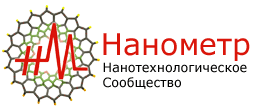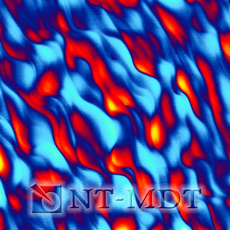Memory technologies:
Nowadays we live under information avalanche. In order to be able to process all this information, we need to store gigantic volumes of it.
What memory technologies are available on the market for information storage (list 5 – 10 technologies as well as the state of development of these technologies; there are different architectures built on one technology, such as Flash: NAND, NOR etc. Different architectures are counted as one technology)? (5 баллов)
Q1 ::: Answer :::
Memory technologies are generally divided into volatile and non-volatile. The ideal answer would be the classification of the memory technologies, but naming the technologies with short description works as well.
|
Technology |
Volatile/
|
Product examples |
State of development |
|
|
1 |
Magnetic recording system |
non-volatile |
hard disks, floppy-disks, ZIP- drives
|
In production |
|
2 |
Optical storage |
non-volatile |
Flash cards (USB, CF, SD etc.), on-board Flash memory (FPGA) |
In production |
|
3 |
Flash |
non-volatile |
- |
In production |
|
4 |
Resistive memory |
non-volatile |
- |
Prototype |
|
5 |
Ferroelectric memory |
non-volatile |
- |
Prototype |
|
6 |
Millipede |
non-volatile |
- |
Prototype (IBM), most likely will be shut down |
|
7 |
Phase-change memory |
non-volatile |
- |
Prototype (Intel&STMicroelectronics, press release Feb. 2008) |
|
8 |
Holographic memory |
non-volatile |
- |
Development (InPhase Technologies) |
|
9 |
Molecular memory |
- |
- |
Development (current academic publications) |
|
10 |
Transistor/diode memory |
non-volatile |
RAM, DRAM etc |
In production |
There are many more such as Racetrack memory, nano-RAM (carbon nanotube-based memory), paper data storage etc.
What are the industry requirements for memory media (list 5 – 10 main parameters)? (1 балл)
Q2 ::: Answer :::
The question is about requirements for memory media. Many answers were related to memory packaging and memory product (for example power consumption, form factor).
Physical:
1. Minimum bit size.
2. Write speed.
3. Read speed.
4. Durability (number of overwriting cycles)
5. Thermal stability of the bit.
Technological:
6. Toxicity of the material.
7. Compliance with production processes.
8. Safety.
9. Manufacturing cost.
10. Recycling capabilities.
What is the minimum bit-size achievable for the technology fundamentally for the all above mentioned technologies? Choose any 3 technology you want to discuss and run the numbers. What is the current state of art for those technologies? (5 баллов)
Q3 ::: Answer :::
Let’s consider 3 memory technologies: optical, magnetic and Flash.
Optical storage: The limitation for the bit size in optical memory is the diffraction limit (the wavelength of the reading/writing light and numerical aperture). Currently Blue ray technology is using blue laser, thus the min bit size is about 200 nm. The technological limit for this technology is air absorption. At the wavelength smaller than 200 nm the air becomes opaque, thus, limiting bit size in optical memory to ~ 100nm.
Magnetic storage: The limiting factor in magnetic storage is superparamagnetism. This is the change in the direction of the magnetic domains because thermal fluctuations. The industry criterion for bit stability is one bit flip out of 1,000,000 in 10 years. After some the statistical analysis this requirement transforms into KUV > 60 kBT, where KU – uniaxial anisotropy energy density [0.1 – 0.3 kJ/m3 (S.O. Kasap, P. Capper, Springer Handbook of Electronic and Photonic Materials, Springer, 2006)], V – volume, kB – Boltzmann constant, T – temperature. Thus, the V > 60*1.37∙10-23[J/K]*300[K]/ 300[J/m3]~8.2∙10-22[m3]. Let’s calculate what’s the size of the cube having this volume: a = (8.2∙10-22[m3])1/3 ~ 100 nm. However, the domain can have rod-shape form, thus, decreasing the linear size of the domain to ~ 5 nm (~ 10 unit cells). For more information see “magnetic perpendicular recording”. This technology is now commonly used in commercial HDDs.
Flash memory: The technological limits for Flash memory are photolithography processes developed for manufacturing this memory. Currently this is 32 nm technology utilized by IMFlash (joint venture of Intel and Micron). However, this is NOT a fundamental limitation for the technology. The fundamental limitation for this technology is the minimum thickness of the layers in the structure, when leakage current will cause bit’ instability. Using current technological materials the thickness of the layer is on the order of 5 nm. The use of high-k materials might decrease this number, but high-k materials were not used in Flash memory technology so far.
Suggest the bit-reading technology for the memory technologies and estimate the fundamental limits of the linear read speed. (3 балла)
Q4 ::: Answer :::
Optical storage: The processes limiting linear read speed are rotation speed and bit-size. It was shown that 10000 – 20000 rpm are maximum achievable in technology (the limiting factor is mechanical vibrations). Radius of the disc is ~5cm, the circumference is 2pR ~ 30 cm. Thus, linear speed 0.3[m]*20,000 [rpm]/60[s/min] ~ 100m/s. Assuming the bit size 200 nm, the read speed will be ~ 500 Mbits/s, which is close to estimations given in Wikipedia article for x12 Blue ray disks .
Magnetic storage: The same logic as optical storage, but min bit size is 5 nm, which increases read speed in 20 times to 10 Gbit/s.
Flash memory: Fundamental limits of the linear read speed are defined by electronics of any memory storage and it depends on the clock frequency, which cannot be very high because of transistor’s capacities and electron mobility. Standard delays in TTL logic are about nanoseconds, so the clock frequencies are GHzs. Currently in state of the art systems clock frequencies up to 10 GHz are used. However, the fundamental limit is electron mobility in the material.
When do you think fundamental limits for memory technologies in terms of bit size, and read speed will be achieved by the industry? (2 балла)
Q5 ::: Answer :::
Optical storage:in terms of read speed the limits will probably be achieved in 2-3 years. In terms of bit size the limits will probably not b achieved, because UV lasers are too expensive for manufacturing.
Magnetic storage: in terms of read speed the limits will probably be achieved in 5-10 years, because it requires significant increase of the clock speed. In terms of bit size technology will approach these limits in 5-10 years.
Flash memory: for read speed clock speed in limiting factor. The clock speed up to the rates of electron mobility in the metal will never be achieved, because of the losses at the contacts. In terms of bit size technology will not approach these limits in the next 15 years due to lithographic limitations (see ITRS 2008 lithography).
Estimate the current market size for memory products in millions of USD. Please state the assumptions used for market sizing. (3 балла)
Q6 ::: Answer :::
There are at least two approaches for the estimation of market size. The first one is estimation based on the number of users, the second one is based on the estimation of market share of major player.
First approach: Let’s look at the average family (assume your family to be the same). Average family uses ~ 100 CD/DVDs, 1 flash card, 1 HDD a year. The total cost of these goods is about ~0. Thus, it is about 0/person. There are ~7,000,000,000 people in the world (Wikipedia: world population). Let’s assume the fraction of active memory product users ~ 60%. All other people are children and elders. Thus, total market is USD 100*0.6*7,000,000,000=USD 420,000M.
Second approach: Hitachi is one of the major players on HDD market. In 2006 Hitachi had 14,4 percent of the market of memory technologies, annual sale was 86,8 billions of USD (21 percent of this annual sale cover information and telecommunication systems. So world annual sale of memory products was near 126,6 billions of USD. The size of HDD market was increased by 7-8 percent in 2007 and by 6-7 percent in 2008. That’s why the current market HDD size of memory technologies is near 145,000 millions of USD. Let’s assume that the market size for other memory technologies such as CD/DVD, USB, CF, SD etc is the same as for HDD. Thus, the total market is ~ USD 300,000 M.
При ответе на английском языке – плюс три балла.

